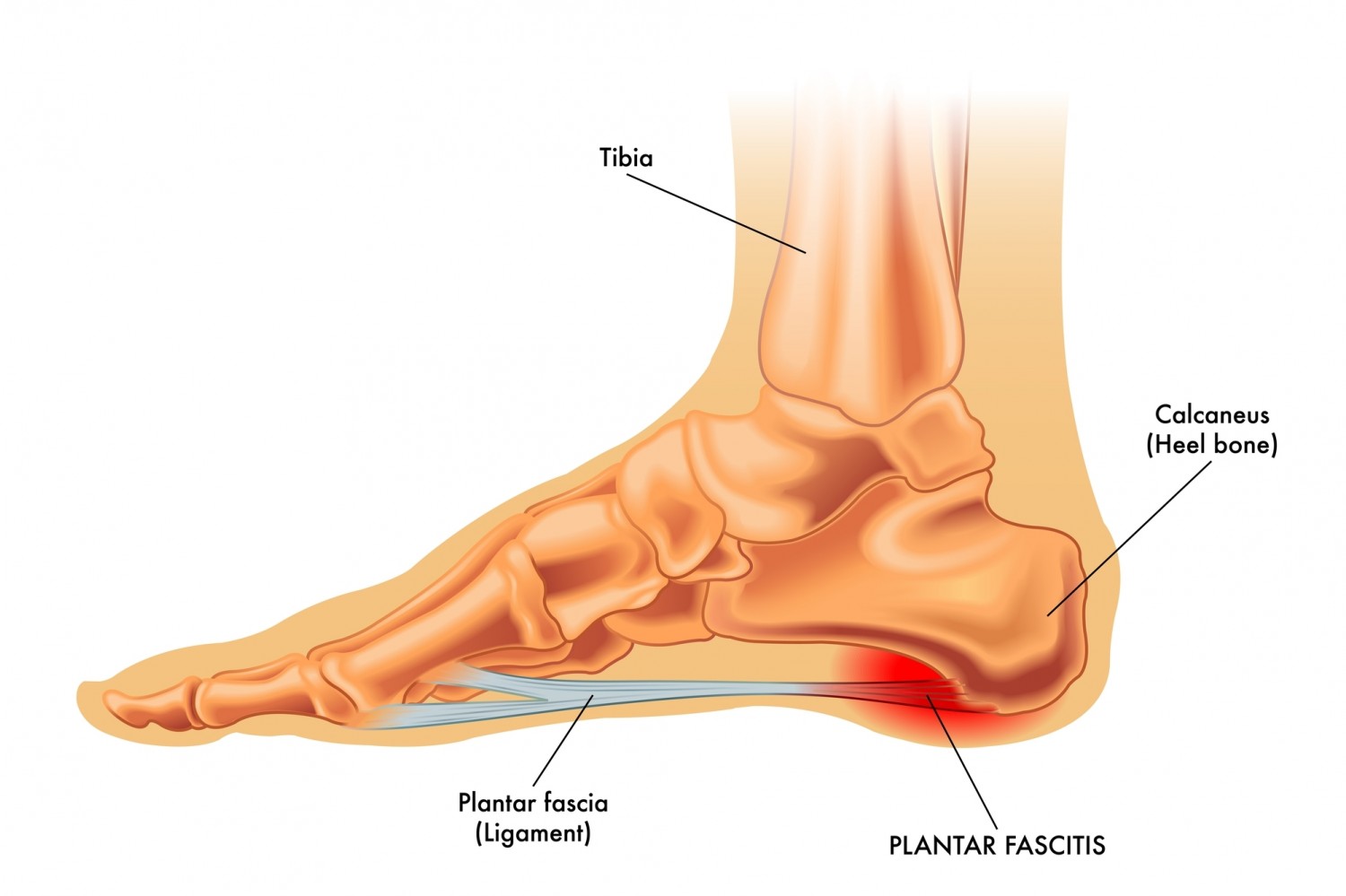PLANTAR FASCIITIS
Plantar fasciitis is the inflammation of the plantar fascia, which is a thick band of tissue that lies at the bottom of the foot. It connects the heel bone to the toes and supports the arch of your foot, functioning as a shock absorber. Plantar fasciitis is one of the most common causes of heel pain. It is most commonly seen in middle-aged men and women who are constantly on their feet. The excessive pressure over the fascia strains and tears the tissue causing heel pain.
Risk factors
-
Obesity
-
Foot arch problems such as flat feet or high arches
-
Activities such as long-distance running, ballet and aerobics
-
Occupations that necessitate walking or standing on hard surfaces for a long period of time (retailers or police officers)
-
Wearing shoes with poor arch support or thin-soled shoes.

The most common symptom is stabbing pain on the bottom of the foot near the heel. The pain is most commonly experienced when you take your first steps in the morning and it slowly decreases after a few minutes. This pain may return when standing after sitting or when standing for a long period of time.
The diagnosis is made with medical history and examination. An X-ray and MRI might be requested when the history is inconclusive or when the symptoms do not improve after the first line of treatment. Also, in some situations, a nerve conduction study is requested if other causes of heel pain must be ruled out.
Most patients respond well to a combination of analgesics, stretching exercises, physiotherapy, rest, ice, night splints and orthotics. Frequently, change in lifestyle (activities, shoe wear, etc) is sufficient to improve the symptoms. When this first line of treatment does not improve symptoms, injections and/or Extracorporeal shock wave therapy will be recommended.
In chronic cases, surgery to release the tight plantar fascia may be needed.
